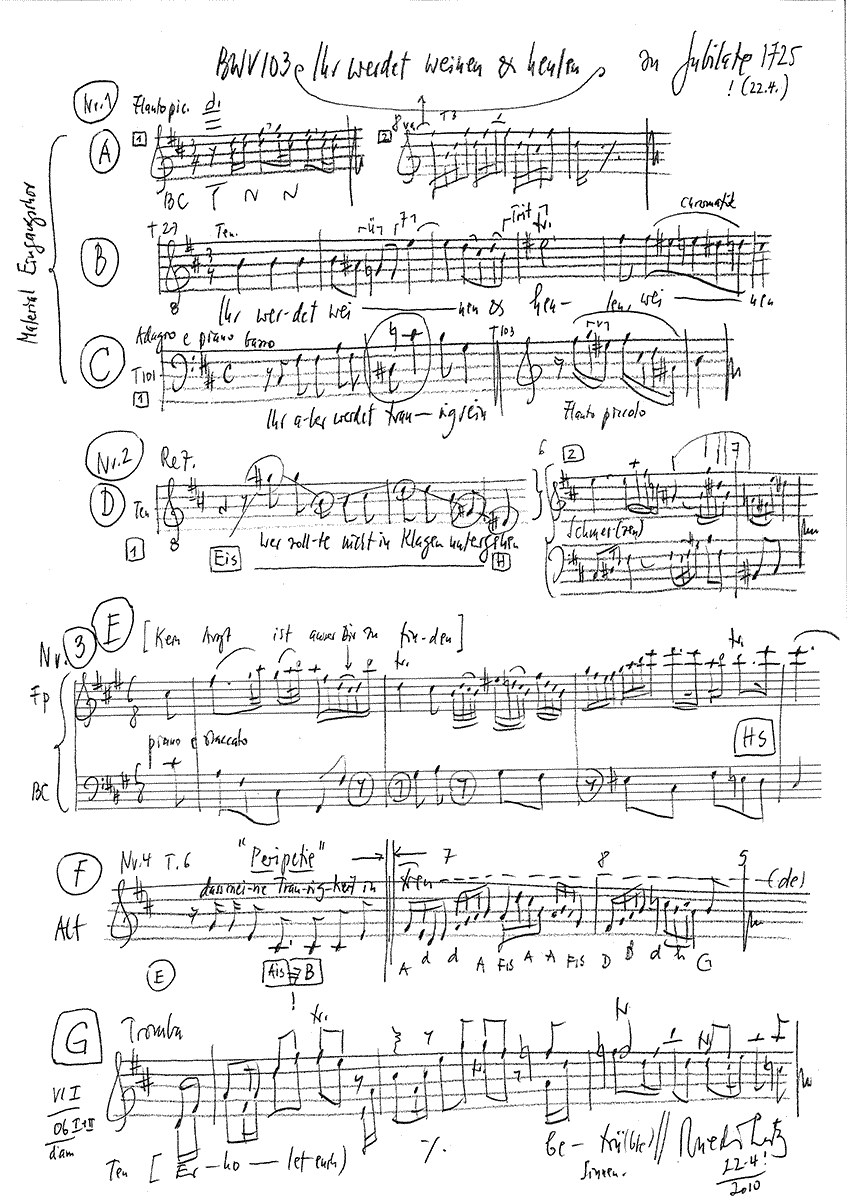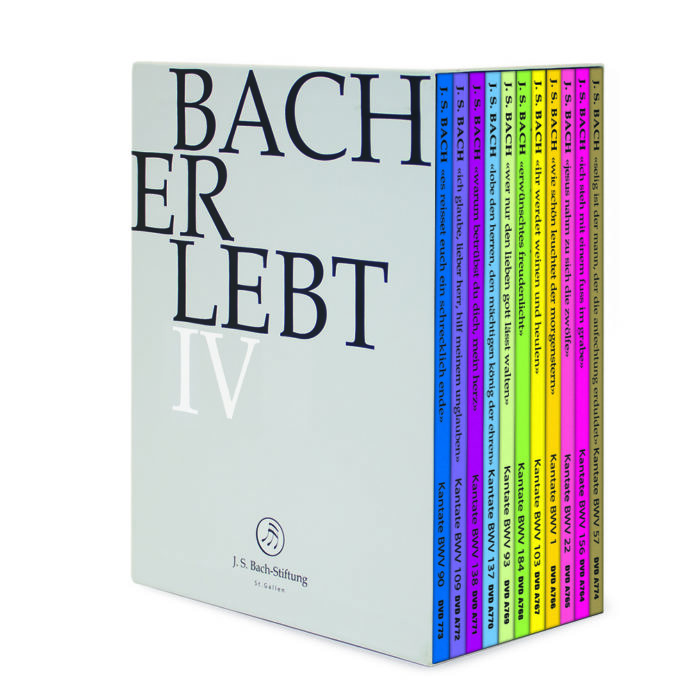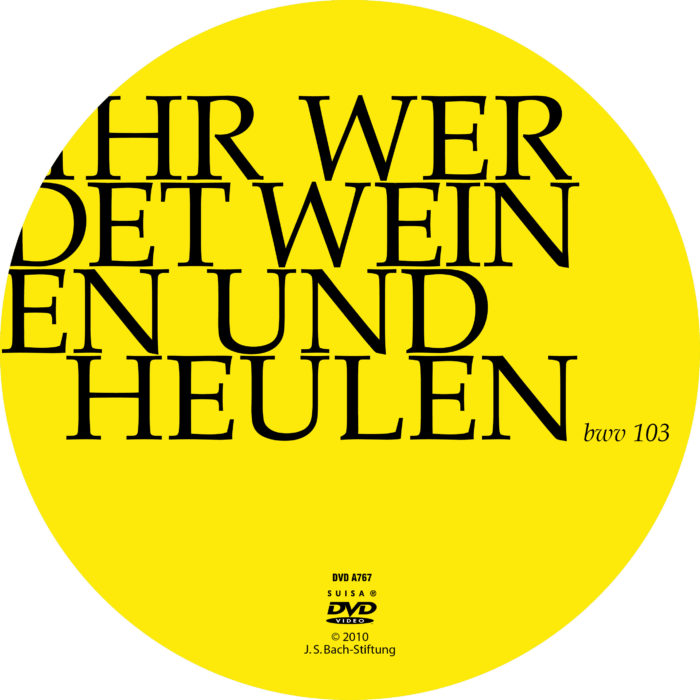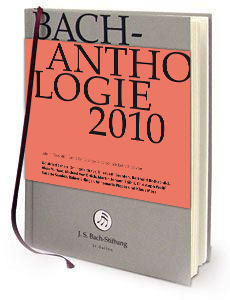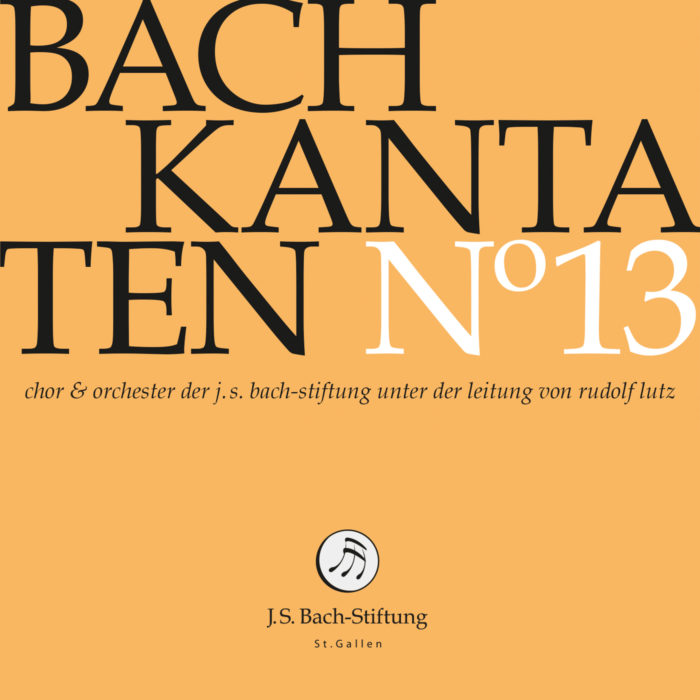Ihr werdet weinen und heulen
BWV 103 // For Jubilate (Third Sunday after Easter)
(Ye will be weeping and wailing) for alto and tenor, vocal ensemble, trumpet, flauto piccolo, strings and continuo
The libretto of cantata BWV 103 “Ihr werdet weinen und heulen, aber die Welt wird sich freuen” (Ye will be weeping and wailing, although the world will be joyful) serves as a vivid reminder that the church – albeit all-powerful in Bach’s time – was once a persecuted sect.
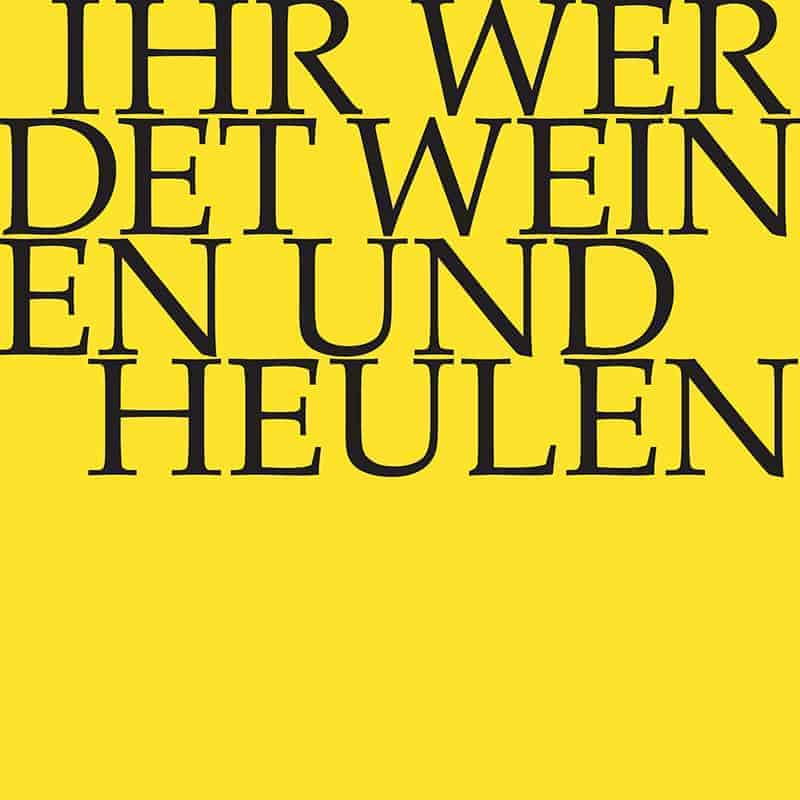
Would you like to enjoy our videos ad-free? Subscribe to YouTube Premium now...
Workshop
Reflective lecture
Choir
Soprano
Susanne Frei, Guro Hjemli, Jennifer Rudin, Noëmi Tran Rediger
Alto
Jan Börner, Antonia Frey, Olivia Heiniger, Lea Scherer
Tenor
Clemens Flämig, Nicolas Savoy, Walter Siegel
Bass
Fabrice Hayoz, Philippe Rayot, William Wood
Orchestra
Conductor
Rudolf Lutz
Violin
Renate Steinmann, Plamena Nikitassova, Martin Korrodi, Fanny Pestalozzi, Ildiko Sajgo, Olivia Schenkel
Viola
Susanna Hefti, Martina Bischof
Violoncello
Maya Amrein
Violone
Iris Finkbeiner
Oboe d’amore
Luise Baumgartl, Thomas Meraner
Bassoon
Susann Landert
Tromba da tirarsi
Patrick Henrichs
Flauto piccolo
Armelle Plantier
Organ
Norbert Zeilberger
Harpsichord
Thomas Leininger
Musical director & conductor
Rudolf Lutz
Workshop
Participants
Karl Graf, Rudolf Lutz
Reflective lecture
Speaker
Berthold Rothschild
Recording & editing
Recording date
04/23/2010
Recording location
Trogen
Sound engineer
Stefan Ritzenthaler
Director
Meinrad Keel
Production manager
Johannes Widmer
Production
GALLUS MEDIA AG, Switzerland
Producer
J.S. Bach Foundation of St. Gallen, Switzerland
Librettist
Text No. 1–5
Christiane Mariana von Ziegler (1695–1760)
Text No. 6
Paul Gerhardt (1607–1676)
First performance
Jubilate,
22 April 1725
In-depth analysis
The notion that relief is unattainable without having first suffered great misfortune, even the derision of our fellow beings, is just as central to human experience as it is to this cantata’s message of comfort. For the mirrored message of the introductory chorus, Bach employs contrasting motives, setting the “weeping and wailing” as a chromatically descending progression of sighs and a devilish tritone leap, while the schadenfreude of the world is expressed through grimly driving concerto rhythms. Written in B minor, the underlying tenor of the movement is expressive, yet serious, while the oboes d’amore and sopranino recorder suggest the transience of all earthly matters, including suffering. The transformation to joy in the final line of text is interpreted very literally by Bach, but not before the insertion of eight highly expressive bars (adagio e piano) of pure compassion. This passage for the bass voice, a brotherly embrace in the moment of deepest anguish, almost seems to anticipate the German Requiem of Johannes Brahms (“Ihr habt nun Traurigkeit”), who, as a great admirer of Bach, would certainly have been familiar with the cantata, which was printed in Berlin already in 1831.
The tenor recitative explores the descent of the faithful into lamentation, before identifying Jesus’ absence as the true ill and a sorrow far more troubling to the heart and soul than persecution itself. This reference to the Farewell Discourse from the Gospel of John links the movement to the Bible passage for the relevant Sunday, which, due to its introit in the early church, is somewhat confusingly termed “Jubilate Sunday”, although the texts for the occasion, like all Bach cantatas dedicated to it (BWV 12, 103, 146), focus more on lamentation and rejection of the material world.
This theology of suffering is illustrated more particularly in the alto aria by means of the medicinal metaphors “physician”, “wounds” and “balm”. Arching over a staccato bassline, the upper parts lend the somewhat ponderous setting a certain agility that is given a note of naivety through the fragile timbre of the sopranino recorder. That this unusual part – something of a “sacralised Papageno” – was rewritten for transverse flute or solo violin for a later performance in 1731 may be seen as an effort to lend the setting gravitas and elegance.
The alto recitative counters the tenor’s lament to God with the confident expectation of Jesus’ speedy return. Here, Bach revisits the contrasting images of the introductory chorus by skilfully transforming the expressive recitation of “sadness” into a joyful melisma of “gladness”. The ensuing tenor aria “Recover now, o troubled feelings” is one of the most popular cantata encores written by the Thomas Cantor – and not without good reason. Conceived as a lively D-major bourrée with brilliant trumpet fanfares, it combines a no-nonsense “modern” character of expression with a finely nuanced interpretation of the “troubled feelings” and “excess of woe” described in the text. Although Bach’s elaborate construction for the setting does not always let the heroism of the text shine through to full effect, this in no way reduces the charm of his venture into a forward-looking, popular compositional style.
The closing movement, set to a chorale verse by Paul Gerhard, effectively summarises the cantata’s underlying message: abandonment and despair “shall be to joy and lasting health converted” – to be sure, a comfort “past all measure”, but one redolent of “German quietism”, for which philosopher Ernst Bloch not unduly censured the Lutheran Reformation. Yet although this humble wait can be related to the Sunday reading from the first epistle of Peter (one fully in thrall to authority), any indications of actual relief from earthly privations are sought in this movement – indeed throughout the entire cantata – in vain.
Libretto
1. Chor und Arioso (Bass)
Chor:
Ihr werdet weinen und heulen,
aber die Welt wird sich freuen.
Bass:
Ihr aber werdet traurig sein.
Chor:
Doch eure Traurigkeit soll in Freude
verkehret werden.
2. Rezitativ (Tenor)
Wer sollte nicht in Klagen untergehn,
wenn uns der Liebste wird entrissen?
Der Seelen Heil, die Zuflucht kranker Herzen
acht’ nicht auf unsre Schmerzen.
3. Arie (Alt)
Kein Arzt ist außer dir zu finden,
ich suche durch ganz Gilead;
wer heilt die Wunden meiner Sünden,
weil man hier keinen Balsam hat?
Verbirgst du dich, so muß ich sterben.
Erbarme dich, ach, höre doch!
Du suchest ja nicht mein Verderben,
wohlan, so hofft mein Herze noch.
4. Rezitativ (Alt)
Du wirst mich nach der Angst
auch wiederum erquicken;
so will ich mich zu deiner Ankunft schicken,
ich traue dem Verheißungswort,
daß meine Traurigkeit
in Freude soll verkehret werden.
5. Arie (Tenor)
Erholet euch, betrübte Sinnen,
ihr tut euch selber allzu weh.
Laßt von dem traurigen Beginnen,
eh ich in Tränen untergeh.
Mein Jesus läßt sich wieder sehen,
o Freude, der nichts gleichen kann;
wie wohl ist mir dadurch geschehen,
nimm, nimm mein Herz zum Opfer an.
6. Choral
Ich hab dich einen Augenblick,
o liebes Kind, verlassen;
sieh aber, sieh, mit großem Glück
und Trost ohn alle Maßen
will ich dir schon die Freudenkron
aufsetzen und verehren.
Dein kurzes Leid soll sich in Freud
und ewig Wohl verkehren.



